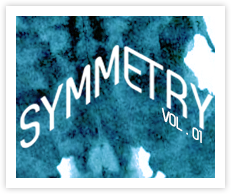

Is Transparency Best Practice For All Organizations?
Stephanie Jeans // September 29, 2011

In an industry like public relations, the debate of right versus wrong is an interesting one. Recently, in Joanne Kerrigan’s ethics class, students debated the use of tazers by the RCMP. This discussion raised the question: Should organizations be completely transparent?
Originally designed to subdue potentially dangerous, fleeing, or belligerent citizens, the tazer has been used as a controversial method of police control. The gun-like device uses propelled wires or direct contact to electrically stun and incapacitate a person temporarily; it has been both a burden and a blessing to Canadian police officers. While unpleasant, the use of a tazer on a distressed citizen is less likely to result in injury then the use of a firearm. However, there have been several isolated incidents when the use of a tazer has resulted in death or serious injury.
These reports often receive an abundance of attention in the Canadian media. Headlines like “After death, use of tazer in Canada is debated”, and “Canada police slammed over fatal tazer death” are not uncommon. Naturally, watching someone get tazered isn’t pleasant, and news stations show these videos without offering many details about the situation. In 2007, an 11 year-old Vancouver boy was tazered after the RCMP responded to a stabbing incident. While the boy escaped without injury, the incident could have turned lethal, as the child has bi polar disorder as well as a heart condition called cardiomyopathy.
The RCMP did not release any basic information concerning this case. The public does not know if there was a weapon involved or the details of the so-called “volatile” circumstances. Due to the lack of communication from the RCMP, it raises speculation about whether it was really necessary for police officers to tazer such a young boy. Was he really that dangerous? Vancouver citizens weren’t so sure. After a 6-month inquiry in early 2011, it was concluded that there would be no charges pressed against the officer as there was no violation of the Canadian criminal code.
The RCMP mission statement claims the organization exists to “preserve the peace, uphold the law and provide quality service” throughout Canada. The mission statement also states “open and honest communication” with the communities the RCMP serves. At the Mount, Public Relations students are taught that transparency is one of the most effective methods in communications practice. When a company is up-front, they tend to have a positive public image, and are more likely to recover from a crisis. This is one reason why it is advantageous for organizations to be truthful and to avoid hiding information. But what happens when transparency gets in the way of an organization’s objectives?
Unique organizations such as the police force or military cannot always be completely transparent especially when the safety of a large population is at stake. When do you reveal information? When do you withhold information? How can the RCMP protect the privacy of individuals involved in a situation while still maintaining transparency?
Police officers often have a split second to decide how they will react to a situation. When the lives of citizens are on the line, they must do what they think is right, often without the input of other officers or the public. On one hand, it is important for the public to know everything they possibly can about a situation. In disclosing all of the details of an incident, publics can make up their own minds about whether they think an officer made the correct decision or not. In the case of tazer use, transparency means officers will be held more accountable for their actions. They are aware the public will have the opportunity to scrutinize them. This may force officers to consider their actions more carefully, and lower the chances that the officer abuse the weapon. In turn, this may result in the reduction of injuries and fatalities associated with tazer misuse.
However, transparency could also hinder communications with RCMP publics. How much should the public really know about tazering events? If the RCMP are to uphold the law and provide quality police service, they must necessarily keep the public’s confidence. Tazering incidents can cast police officers in a negative light due to media sensationalism. As a result, citizens may become less trustful and more apprehensive toward police intervention. Let’s backtrack for a moment, however; let us recall that, again, officers often have mere seconds to react to a situation. Should citizens judge or place blame on RCMP officers? Should we always rely and trust the police force to protect and serve us with good judgment?
Transparency is a tricky concept in public relations. A practitioner must consider all aspects of a situation, especially in an authoritarian-style organization like the RCMP. It is an ethical dilemma the RCMP are constantly confronted with: what information is safe to share with the public? Will it help the situation, or hinder it? Will it hurt the organization, or aid in upholding its values? These are difficult questions to answer, and each situation is unique and holds its own challenges. The struggle to balance transparency and public safety is a battle that we may never see end.
